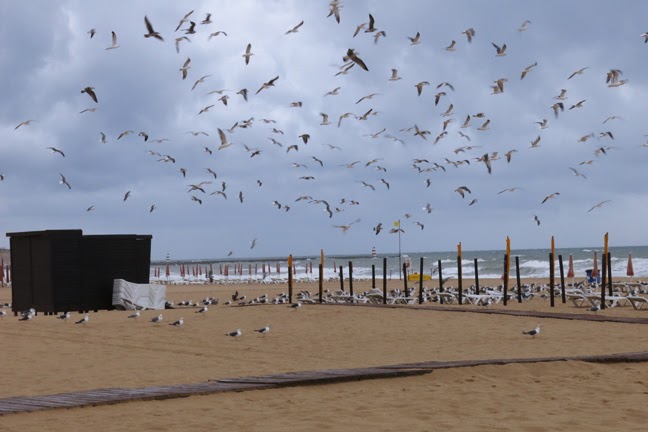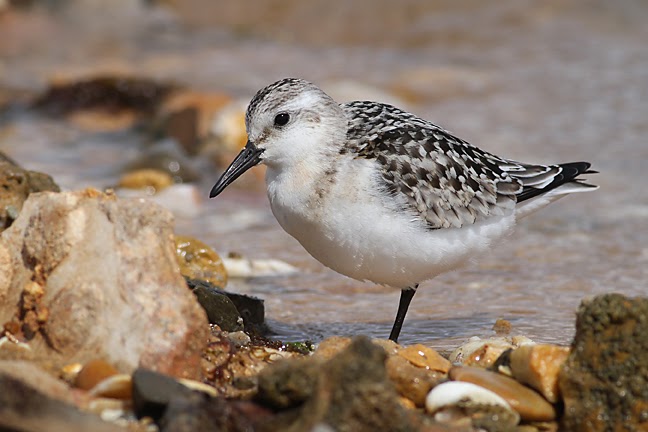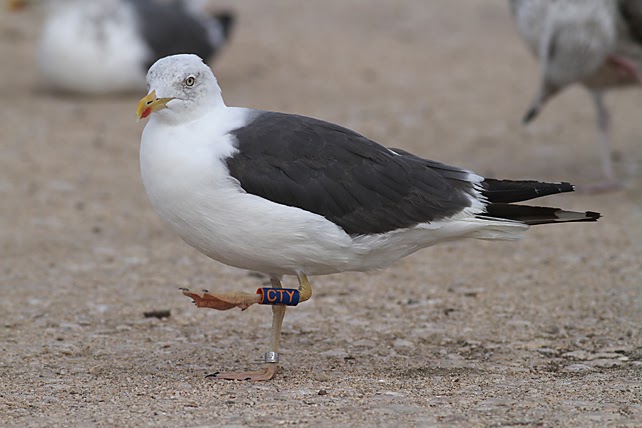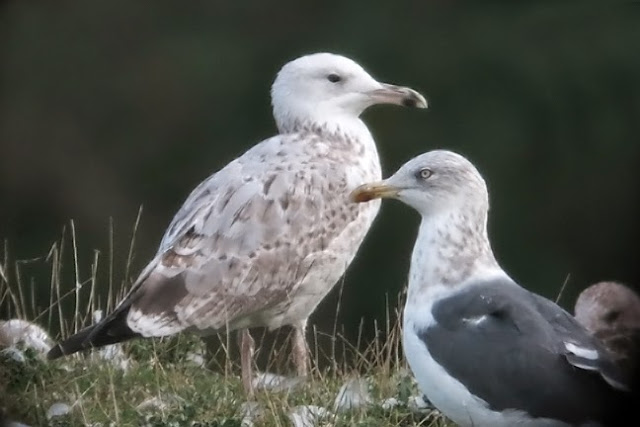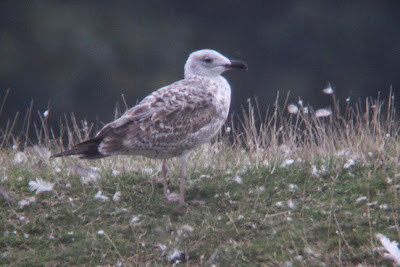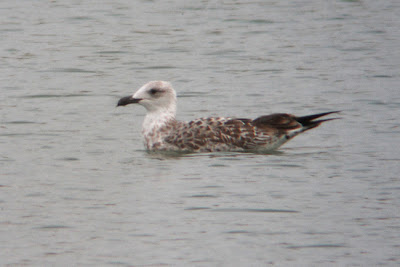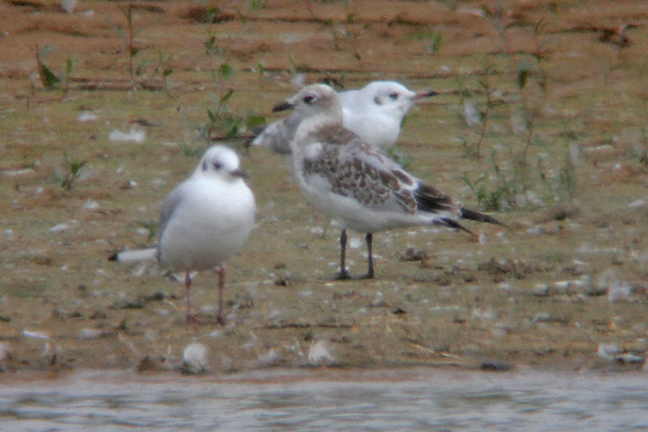My previous posting about a juvenile Yellow-legged Gull at Cotesbach landfill site seems to have been popular. As such I thought I'd waffle on a bit more about large white headed gulls in their juvenile plumage. I failed to find any juv. YLG's on Wednesday night, but I did spend plenty of time looking closely at the juveniles of the commoner species that were there.
Juvenile Lesser Black-backed and Juvenile Herring Gull
The middle bird in the photo above is a juv Herring Gull and the one in front of it is a juv. Lesser Black-backed Gull. Before identifying a juv. YLG or Caspian Gull a good working knowledge of the other two species is essential. Of course it is not always easy and there will be many opportunities to get it wrong. This particular Herring Gull, from my experience, has notches on the tertials that are larger than most. The tertials are the horizontal feathers to the left of the long black wing tip feathers (sorry if you know this already). The notches are the cream coloured triangular shaped markings on the brown feathers. Not all tertial notches on juv. Herring Gulls are as obvious, but notches of some sort can almost always be seen unless the feathers are really badly worn. The tertials of juv. LBB Gulls are dark brown with pale buff fringes. Beware, however, that some LBBGs have notched tertials. To me, juv. Herring Gulls always appear to be slightly frosty in comparison to the more dusky juv. LBB Gulls and the large head size of HG is usually distinctive. HG bills are usually obviously more bulky than LBBG's, but not always as there are a few large juv. LBBG's to contend with.

Juvenile LBB Gull
On Wednesday night I estimated that there were at least 3000 Lesser Black-backed Gulls loafing around at the landfill site. There were still about 20 YLG's, 30 Herring Gulls and a lone GBBG.
Third-winter Yellow-legged Gull
Amongst the gulls on the A5 Lagoons were at least nine YLG's and the one above was a real monster. He took great pleasure in bossing the other gulls about.
A Couple of YLG's from Wednesday 21/08/13 (left and back)












